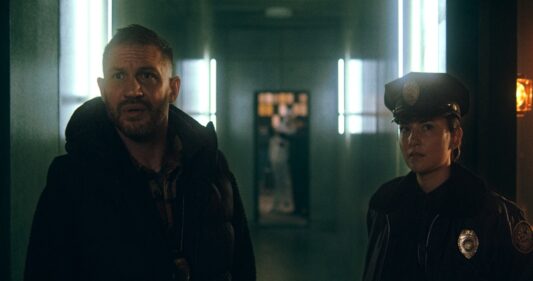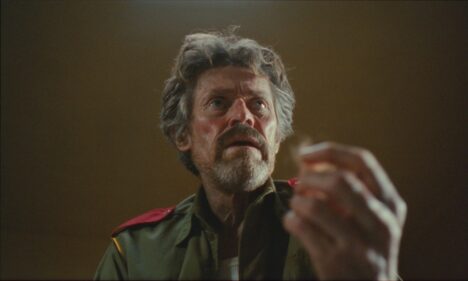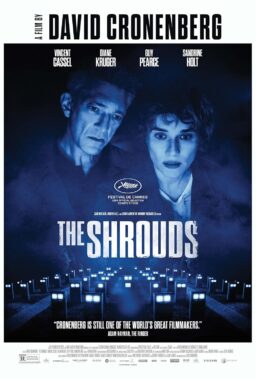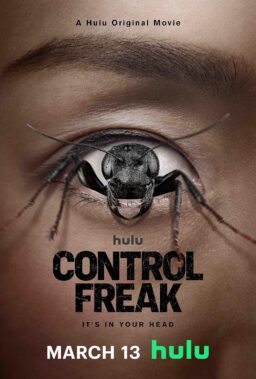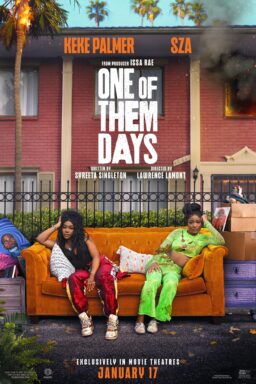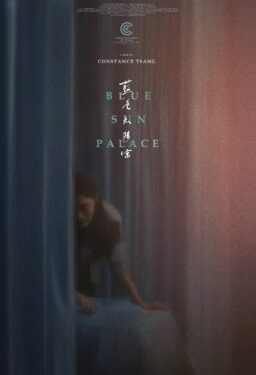Between Beverly Hills and the Valley. He came around a curve and saw a car coming straight at him – a driver trying to pass five cars. On one side of Beatty was oncoming traffic. On the other side was a 100-foot drop.
“I had just that moment been thinking, gee, I oughta have my safety belt on,” Beatty said. “Then here comes this car. I thought – you know – well, this is it. I ended up with a gash down the side of my
car.”
He drove on, and it was only later that he realized he came
maybe a few inches from death. From everything ending right there on Mulholland Drive.
We stood looking at the gash down the side of his Mercedes while he told this story, and then he said it explained why he doesn’t make very many movies: “There’s something in me that says, now wait a minute, okay, let’s try to do some good pictures, but remember–I don’t get to come back in another life as a waiter, or a drum majorette. I have to have some time for my life, too. I’m not saying I live any kind of a model life, but at least I have some fun. I don’t think that I’m immortal. A lot of people live as if they do.”
The result of this philosophy, Beatty said, is that he makes so few movies that “every movie I make is a comeback. I made my first comeback when I was 23 or 24.”
Right now the movie industry is wondering whether Beatty can make still another comeback in his big-budget special effects epic “Dick Tracy,” a movie based on the exploits of a comic strip detective. The marketing research is not promising. It suggests that few people in the demographic target audience know or care who Dick Tracy is–or who Warren Beatty is. Then you get down to the footnotes and you discover that, last summer, “Batman” had the same kind of figures, and that nobody in the target audience knew or cared who Michael Keaton was, either. Of course, “Batman” also starred Jack Nicholson, but then again of course “Dick Tracy” also stars Madonna. The speculation goes round and round.
Beatty’s most famous comeback was in 1967, when he produced and starred in “Bonnie and Clyde,” one of the greatest movies of all time. That movie opened right after a famous Rex Reed profile in Esquire announced the end of Beatty’s career. Other comebacks came in “Shampoo” (1975), “Heaven Can Wait” (1978) and “Reds” (1981). He won the Oscar for best director for that one–but then he didn’t work again in the 1980s except for the historic box office and critical flop “Ishtar” (1987).
Now here is this strange and beautiful movie “Dick Tracy,” which seems to come out of some kind of comic strip dreamland, which looks and sounds like no other film ever made, and which has Warren Beatty wearing a yellow raincoat and getting his orders from a Two-Way Wrist Radio. The movie opens all over the country on June 15. The T-shirts are already in the stores. We might as well ask the question that Hollywood has been asking ever since Beatty first announced this project more than five years ago: Why in God’s name does Warren Beatty want to make a movie about Dick Tracy?
“What I was after,” he was telling me, as we drove down Sunset in the damaged Mercedes, “was the feeling you had the first time you went in Times Square and saw those lights. A car wasn’t a Ford or Chevy, it was a car. Chili was chili. And blue was blue, red was red, bad was bad and good was good.”
It was the same feeling he got when he read the color funnies in the Sunday newspaper–back in the days when they were called the “color funnies,” and Dick Tracy was on the front page of a lot of them. Tracy was the most popular comic strip in America, before Pogo and Peanuts and Doonesbury, and one of the best things about it was the way it seemed to be filled with details. Sometimes Chester Gould, the artist, would want to point out a clue. He’d draw a little arrow connected to a box with a label in it, like “Counterfeit Bill” or “Thumb Print.” The most famous arrow and caption, of course, pointed to Dick Tracy’s “Two-Way Wrist Radio.” If you were a kid reading Dick Tracy, those arrows and boxes were special–they were like asides from the artist, warning you not to miss anything.
When Warren Beatty read those funnies, he said, they seemed to be bathed in a certain innocence, in a purity of line and color. And when he first thought of making a movie about Dick Tracy, what attracted him most was the permission the movie would give him to do things you couldn’t get away with in ordinary movies.
“It gave me permission to wear a yellow hat and a yellow raincoat that match. Permission to say, All right, men–let’s go! Permission to have a leading lady say, Dick Tracy, are you asking me to marry you? You couldn’t do that in a realistic movie.
“And there aren’t any four letter words, either. A movie like this gave me permission not to use them. It gave me permission to have no blood when people get shot. Or to put a full moon in that stays for days and days. Or stars that twinkle like that.”
Beatty was explaining these permissions while he drove to the Commencement Day exercises at the American Film Institute, up in the Hollywood Hills. He was going to present a special award to Dede Allen, the great film editor who had worked with him on “Bonnie and Clyde.”
“You always have a basic rule in the movies,” he said, “which is to get out of the way of the story and not constantly be saying I’m here too! Take art direction, for example. It’s supposed to work without calling attention to itself. But not in ‘Dick Tracy.’ You’re supposed to notice everything.”
One of the first things you will notice is that the entire movie is shot in basic colors and shades–red, green, blue, yellow, orange, purple and black, fleshtones. It’s not as distracting as you might think. When you see a room with a red and green chair in it, the chair even looks oddly familiar, and then you remember: That’s how chairs used to look in the color comics.
“That look came out of a conversation I had with Herb Gardner,” Beatty said. “Before he was a playwright he was a cartoonist. He told me how they turned it in their strips to the newspaper. They drew in black and white, and then they numbered everything to show where the colors went. The colors all had numbers. If blue was a 2, they’d put 2’s on all the blues. And so on. I thought, mmmm… ”
One of the opening shots of the movie flaunts its artificiality and artistry. Starting with a closeup, the camera pulls back to show a city street and then it pulls back farther and farther, until we see a skyline–a metropolis that looks like a comic book artist’s vision of the Big City–and then the camera pans across the horizon, and it’s a fairly quick pan, which has an extravagance about it. The shot seems to be saying, hey, we have a lot of city here–we can show you a metropolis stretching to infinity. Many movie special effects are limited in scope; we can see so far, but no further. In “Dick Tracy,” you have the feeling you could see forever.
We were pulling into a winding driveway now, at the American Film Institute, and the car rolled quietly to a halt behind a brass quartet that was playing during the parade of graduating students. Beatty got out and walked up to the front of the big green lawn where the ceremony was being held, and Jean Firstenberg, the AFI president, introduced him to say a few words about Dede Allen.
“I’ve been in a room with Horowitz and Rubinstein when they played the piano,” Beatty told the students. “I’ve seen Fonteyn dance, and Bobby Kennedy campaigning. I’ve seen…oh, you can’t imagine what I’ve seen.” There was laughter. “And I’ve had the great thrill of seeing Dede Allen at a movieola.”
After the ceremony, Beatty hugged Allen and talked to some of the students, posed for some snapshots, and then drove back toward his suite at the Four Seasons. There was a plate of fruit waiting on the table when he got there, and he started nibbling on kiwis and slices oranges, and drinking iced tea. I asked him about Madonna, who plays Breathless Mahoney in the film and sings several songs in scenes that owe a great deal to Marilyn Monroe in “Some Like It Hot.”
“Madonna,” he said, “has intelligence, energy, application, generosity of spirit, humor, depth, extreme good health, an attractive physique, and speaks as an artist in her singing and her songwriting from her unconscious. She’s a big, beautiful generous fact of life, and I think we should all just relax and enjoy it.”
It came out just like that: Uninterrupted and almost rehearsed, as if it were his Madonna mantra, useful for evoking her if not perhaps for truly scrutinizing her.
“I remember the day,” he said, “I thought I must offer this girl this movie and see if she wants to do it. She’d called me about it, and I had originally not found her easy to communicate with. So she came to meet me and I found that talking to her, that I couldn’t stay seated. I tried to sit down and found myself standing up and talking to her, and I realized afterward that she, well, that I got a lot of fun out of talking to her, and that she was energizing.”
Than Warren Beatty, who would know better if she was energizing, but Beatty seemed to segue effortlessly into an all-purpose explanation of why he rarely talks to the press and never talks about personal friends.
“In the 1970s, I found that people just made up whatever they wanted me to say. I was quoted as saying outrageous things. I thought it might be best if I were known for not speaking to anyone. Especially not on personal relationships, particularly of the female gender. You can be misquoted. Taken out of context. A friend feels differently about you. So I tried to make it very clear to everybody that I never talk about people. And I’m still constantly quoted. It’s all made up. For 12 or 13 years, I just didn’t do any interviews. But they wouldn’t stop making things up.” “When we were releasing ‘Reds,” I didn’t do interviews, and I was criticized for that, for not supporting the picture. Nothing was further from my mind. But I was afraid my interviews might draw attention away from the movie, might be hotter copy than ‘Reds.’ So I didn’t talk to anyone. When ‘Ishtar‘ came along, I realized I was caught in a strange bind. Unusual. The management of the company was not behind the picture. You had the head of the company, David Puttnam, saying the picture was a degenerate, arrogant thing. I decided to do some interviews sitting beside Dustin Hoffman, keeping things light. But the movie never had a chance. How could people have a chance to like it, with management itself criticizing the budget?”
Well, I said, I didn’t laugh during “Ishtar” and I’m not sure it had anything to do with the budget.
“How could you laugh when you see people struggling to make a movie for $200,000 and you see these two fat pigs making all this money in the desert? That was the picture of us that was painted. We said in the original negotiations, let us take the money at the back end. But Columbia wouldn’t let us do it, because half of the budget was coming from Home Box Office. So they wanted their money now.
“All right, we said, we’ll take the money, but please don’t let anyone know what this picture is going to cost. And they said absolutely not. And then they were all fired. And Puttnam came in, who had been attacking Dustin Hoffman for years in the press, and attacking me. To this day I’ve never met him, received a telephone call, telegram, letter from him, anything. And he never saw the movie. and he was in charge of releasing the movie. And these days when you release a movie, it’s like a political campaign, it’s all over in a few days. And here was the campaign manager, refused to see the movie.” Beatty sighed. “For some time now the cultural pages have been so unified with the business pages that movie reviews are financial, economic and political reporting–they have nothing to do with art.”
So let’s talk about art, I said. One of the most striking visual elements of the film is the virtuoso makeup used to recreate such Gould characters as Mumbles (Dustin Hoffman), Lips Manlis (Paul Sorvino), Flattop, Little Face, The Brow, and particularly the villain, Big Boy Caprice, who is played with amazing energy and comic verve by Al Pacino–to such a degree that this is Big Boy’s picture in the same sense that “Batman” belongs to Jack Nicholson’s Joker.
I wondered why the makeup wasn’t taken all the way to the top–to such characters as Tracy, Trueheart, Junior, Breathless and the faithful sidekick Sam Catchem (Seymour Cassel).
“When you take that square-jawed drawing of Dick Tracy and you try to put it on a person’s face, I wish you luck,” Beatty said. “I tried the prosthetics. I did the chin and the nose and all that nonsense. In the strip, Tracy was really drawn from basically one angle all the time. With Tess and Tracy, the Kid, Chief, Breathless, Sam, it was the same thing: We got too interested in the mask, and it just couldn’t work. Nobody looked like anybody they were trying to look like. Plus there was no capillary in their emotions. No bringing it to life. I looked at those characters that way and I couldn’t stop thinking about makeup.”
There were a lot of rumors during the making of “Dick Tracy,” I said. Rumors about you being concerned about your own appearance, rumors about Madonna…
“I think the way that gets started is by not giving them anything else. By dropping out and not doing any publicity. There are so many stories about me. On ‘Reds,’ that I gained 100 pounds in the editing room. I hadn’t gained any weight. Stories about my being a recluse. What I realize now is that if you don’t give them something, what they make up about you will be negative, and that’s disturbing.
“I saw a story the other day that I did retakes on all my closeups. I didn’t do one. And column items that Madonna couldn’t get it right. That we needed 25 or 30 takes on some scenes. Absolutely not true. She gets it right every time.”
He sighed again. “There is all the invidiousness, the envy, the hostility, that is directed toward the celebrated, toward the famous.”
There was a silence as the shadows fell across the early evening, and then Beatty returned to his opening theme, to the brevity of life and the implacable passage of time.
“Not long ago I was down in Southern Virginia where I was born,” he said. “I went to Richmond and decided to find the house where I had lived until I was 5 or 6, and it wasn’t easy. And I finally decided that the house was torn down. So I went to the house next door, and an old man came to the door. And I said, ‘I’m sorry to bother you, but my name is Warren Beatty, and I think that next door to you is the house that I lived in.’
“He said, ‘Come on in.’ He introduced me to his wife. He looked at me and said, ‘The last time I saw you, you were playing with your little cars in front of that fireplace. I bought this house from your father.’ This was the right house! He took me around, went up to where I had my crib, and small bed. He told me how old he was, and I realized that the age he was when he saw me playing with my toys, was precisely the age that I was now. And it didn’t seem like that long.”

